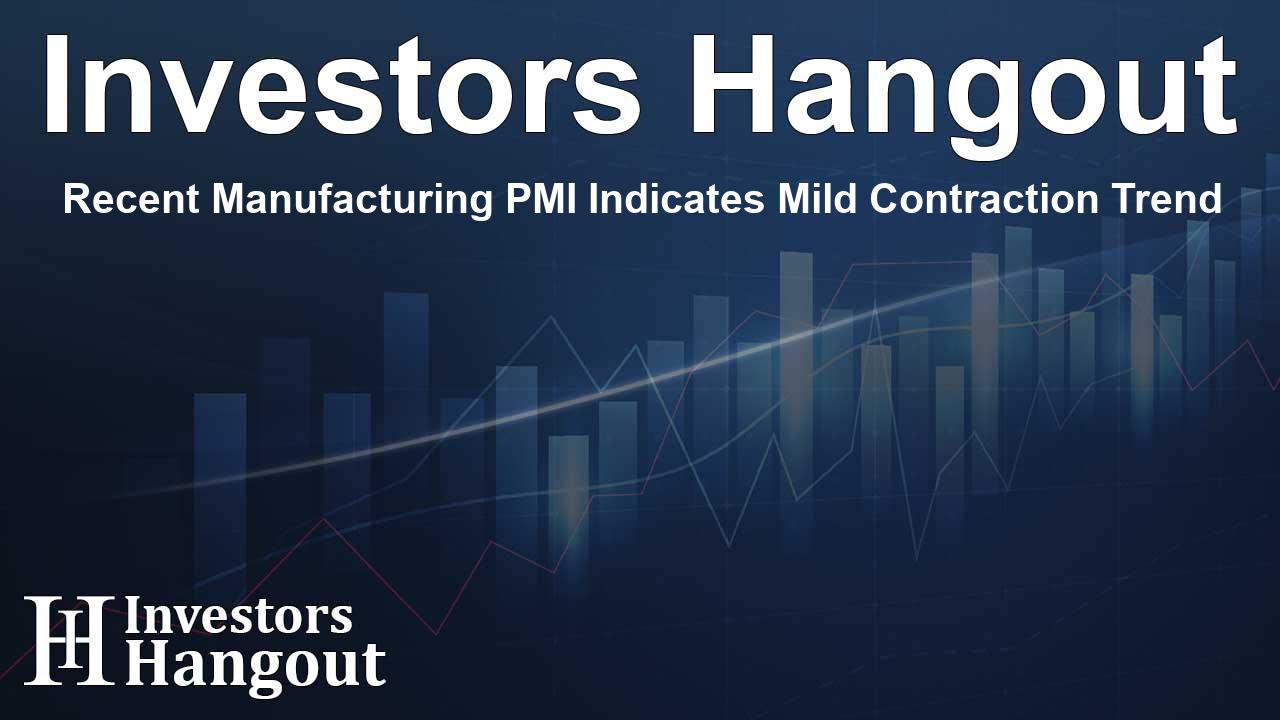Recent Manufacturing PMI Indicates Mild Contraction Trend

Recent Manufacturing PMI Report
The Manufacturing Purchasing Managers' Index (PMI) serves as a crucial metric for assessing the health of the manufacturing industry. In its latest report, the PMI recorded a value of 49.4, suggesting a marginal contraction within the sector.
Understanding the PMI Figures
This reading falls below the anticipated forecast of 48.3, highlighting a performance that is less robust than many had hoped for. Traders closely monitor the PMI, as it often provides early signals of trends in the manufacturing sector, which can influence broader economic predictions. A PMI score above 50 denotes growth in the sector, while a score below 50 indicates a downturn.
Sequential Trends in PMI
The current PMI result of 49.4 also signifies a slight decline from the previous number of 49.7. This sequential dip may suggest a reduction in momentum within manufacturing activities. Nevertheless, it is crucial to recognize that the PMI remains near the neutral benchmark of 50, which indicates that the industry is not deeply contracting but is instead facing a gentle slowdown.
Implications for the Economy
The lower-than-expected PMI reading is perceived as bearish for the US dollar. A stronger manufacturing sector is typically aligned with a robust economy, which tends to bolster the strength of the currency. Conversely, a subdued performance in manufacturing may hint at economic deceleration, exerting downward pressure on the dollar.
Future Considerations
In summary, the latest Manufacturing PMI score of 49.4 reflects a slight contraction in the manufacturing realm, falling short of the expected figure of 48.3 and slightly dipping from the preceding score of 49.7. This situation could create some challenges for the US dollar, as a weaker manufacturing environment is generally linked to sluggish economic conditions. However, the proximity of the PMI to the neutral 50-point signifies that the manufacturing sector is navigating through a mild downturn rather than entering a severe contraction.
Frequently Asked Questions
What does a PMI below 50 indicate?
A PMI below 50 suggests that the manufacturing sector is experiencing contraction rather than growth.
Why is the Manufacturing PMI important?
The Manufacturing PMI is a leading indicator of economic performance and helps forecast trends in the economy and the dollar's strength.
How does the PMI affect traders?
Traders closely watch the PMI as it provides early signals of economic performance, impacting their strategies and market expectations.
What can cause fluctuations in the PMI?
Fluctuations in the PMI can be influenced by various factors, including supply chain disruptions, demand fluctuations, and changes in production levels.
What might be the implications of a declining PMI?
A declining PMI may signal a slowdown in economic activity, potentially affecting employment rates and investment decisions.
About The Author
Contact Lucas Young privately here. Or send an email with ATTN: Lucas Young as the subject to contact@investorshangout.com.
About Investors Hangout
Investors Hangout is a leading online stock forum for financial discussion and learning, offering a wide range of free tools and resources. It draws in traders of all levels, who exchange market knowledge, investigate trading tactics, and keep an eye on industry developments in real time. Featuring financial articles, stock message boards, quotes, charts, company profiles, and live news updates. Through cooperative learning and a wealth of informational resources, it helps users from novices creating their first portfolios to experts honing their techniques. Join Investors Hangout today: https://investorshangout.com/
The content of this article is based on factual, publicly available information and does not represent legal, financial, or investment advice. Investors Hangout does not offer financial advice, and the author is not a licensed financial advisor. Consult a qualified advisor before making any financial or investment decisions based on this article. This article should not be considered advice to purchase, sell, or hold any securities or other investments. If any of the material provided here is inaccurate, please contact us for corrections.
